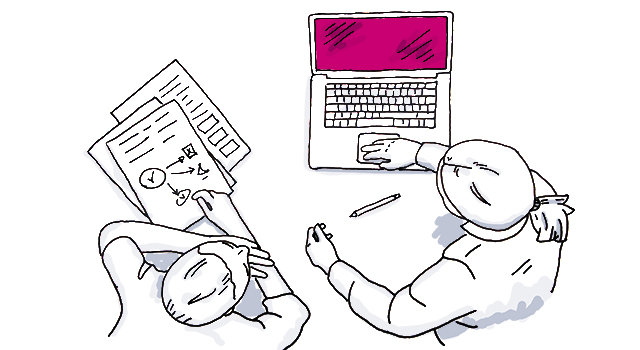How to hook your customers/clients to use your services once they get to know and experience about your work? Well here are some deep end tips to follow.
What is a habit? “Behaviours done with little or no conscious thought.”
Habits are one of the ways the brain learns complex behaviors.If our programmed behaviors are so influential in guiding our everyday actions, surely harnessing the same power of habits can be a boon for industry.
Habit-forming products change user behavior and create unprompted user engagement.
Seeking pleasure and avoiding pain are two key motivators in all species. When we feel discomfort, we seek to escape the uncomfortable sensation. that habit-forming products create associations in users’ minds — and that the solution to their pain may be found in your product’s use.
The author, Nir Eyal, portrays building a habit-driven system as the Hook Model in this excellent book, Hooked. It has clear explanations and concrete examples of the psychology behind what drives our behavior in a world where there are so many apps that are competing for our attention.
4 Key Principles to creating habit-forming products:
Trigger
There are two sorts of triggers – External (an email, for instance) or Internal (checking Facebook routinely). The trigger is the actuator of the behavior.
External triggers are implanted with data that instructs the client next, similar to Email, App Notifications, App Icons. External triggers are embedded with information, which tells the user what to do next.
Internal triggers are positive or negative feelings like satisfaction, depression, dread of passing up a significant opportunity, fatigue, etc.
In a few years, new technologies will create all sorts of currently unimaginable triggering opportunities.
Action
To expand the chances of a client making the planned move, the behavior designer makes the activity as simple as could be expected while at the same time boosting the user’s inspiration. Action is the aftereffect of a trigger.
To build the odds of a user getting back to the product, the product should not be challenging to utilize, and there ought to be action taken to expect a reward.
Variable Reward
Variable situations of remuneration are quite possibly the most incredible assets that organizations use to hook users. Research shows that degrees of dopamine flood when the mind is anticipating an award. Presenting changeability increases the impact, making a furious chasing state, inciting the parts related to needing and want.
Investment
An activity that improves the help for the following go-around. Welcoming companions, expressing inclinations, building virtual resources, and figuring out how to utilize new highlights are essential responsibilities that improve the users’ service. Increment the user commitment and interest in the product, which builds the user’s odds of returning to the item regularly.
An investment model could be time, cash, welcoming companions, expressing inclinations, building virtual resources, and figuring out how to utilize new features.
Through successive “hook cycles,” the products could arrive at their definitive objective of bringing clients back over and over without relying upon expensive publicizing and showcasing.
Users should see how habit-forming innovation attempts to forestall undesirable control while appreciating the advantages of these developments.
“Habit forming products start as vitamins and end up being painkillers” -Nir Eyal
Organizations should comprehend the mechanics of habit formation to build commitment with their products and services and, at last, assist users with making valuable schedules.
I felt more knowledgeable and aware of the company strategies used and which are described in this book. It has valuable experiences and models from incredible items like Twitter, Instagram, Pinterest to make habits that stick. This book is for any individual who tries to see how products impact our behavior in our everyday lives. One can hope to make an application that hooks its users and improves users’ commitment to your current app.
Reflection:
Jack Dorsey, co-founder of Twitter and Square, says, “[If] you want to build a product that is relevant to folks, you need to put yourself in their shoes and you need to write a story from their side, and these words stuck by me and will trigger me whenever I am thinking of answering some important questions or making some significant decisions in my life.
